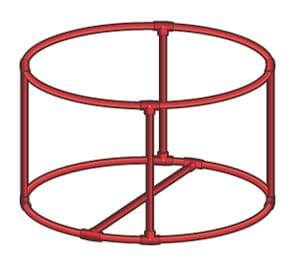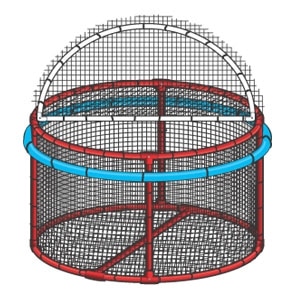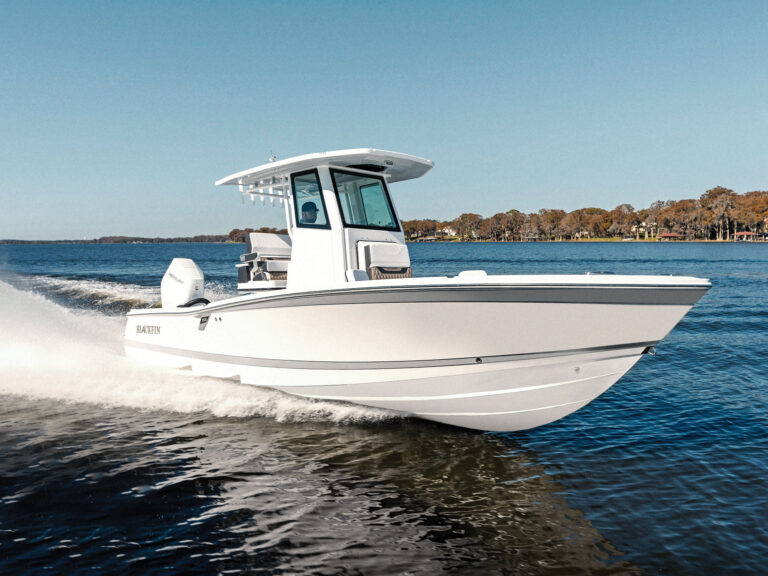
Bait Bunkhouse
*three 20-foot lengths of 3/4-inch commercial-grade PVC pipe
*12 one-inch PVC Tees
*16 one- to 3/4-inch PVC reducers/bushings
*two 90-degree 3/4-inch PVC elbows
*three swim noodles
*100 black zip-ties
*12 stainless-steel screws
*one 50-foot roll of 49-inch-wide No. N1020 1/2-inch plastic screening
*one can of PVC cement
*one can of anti-fouling boat bottom paint
*hacksaw
*power drill with small bit Step 1
To make a bait pen five feet in diameter, cut two of the 20-foot PVC pipes to 14 feet in length. Be sure to cut the male end of the pipe, as the built-in male-female connectors are how the loop is finished. Slide six tees onto one length of pipe and four onto the other, before bending the PVC into a circle and joining the ends with PVC cement.

Bait Bunkhouse
Cut the remaining 20-foot length of PVC into four 42-inch lengths. These are the vertical supports and they each run from a tee on the bottom ring to a tee on the top ring. Use the PVC cement to affix the vertical supports to four tees on one ring, cementing in the reducers to ensure a snug fit. After the adhesive has cured, space the vertical supports evenly around the pen, then drill the tees and fix their positions on the rings with the stainless-steel screws. Glue the vertical supports to the tees on the other ring and use the screws to secure the tees. Take a five-foot length of PVC and use the remaining two tees on the ring to span the bottom ring as a crossmember. Cement it in place. Paint the frame completely with bottom paint. Allow it to dry.

Bait Bunkhouse
Affix the plastic screening to the inside of the cylinder created by the rings and supports, using a zip-tie to attach it to the rings and vertical supports every six inches or so. Cover the bottom and half of the top of the pen, overlapping all seams and using zip-ties generously.

Bait Bunkhouse
Use the remaining pieces of PVC pipe to fashion a half-circle-shaped hatch cover. Join six- and four-foot pieces of PVC with an elbow, then bend the six-foot pipe around to meet an elbow cemented to the other end of the four-foot length. Cover this half-circle hatch with plastic screen, letting it overlap all sides by at least three inches. Lay it over the uncovered space of the top, then affix this lid to the mesh top with zip-ties along the straight piece of PVC. Don’t cinch the zip-ties too tightly here, this is the hinge of the hatch and needs to be able to swing freely. Attach the pool noodles around the pen about three inches from the top, using zip-ties to connect them right to the mesh. Float the pen in a spot with slight current and load it up. If you build a bait pen, send us a photo at webmaster@saltwatersportsman.com.









